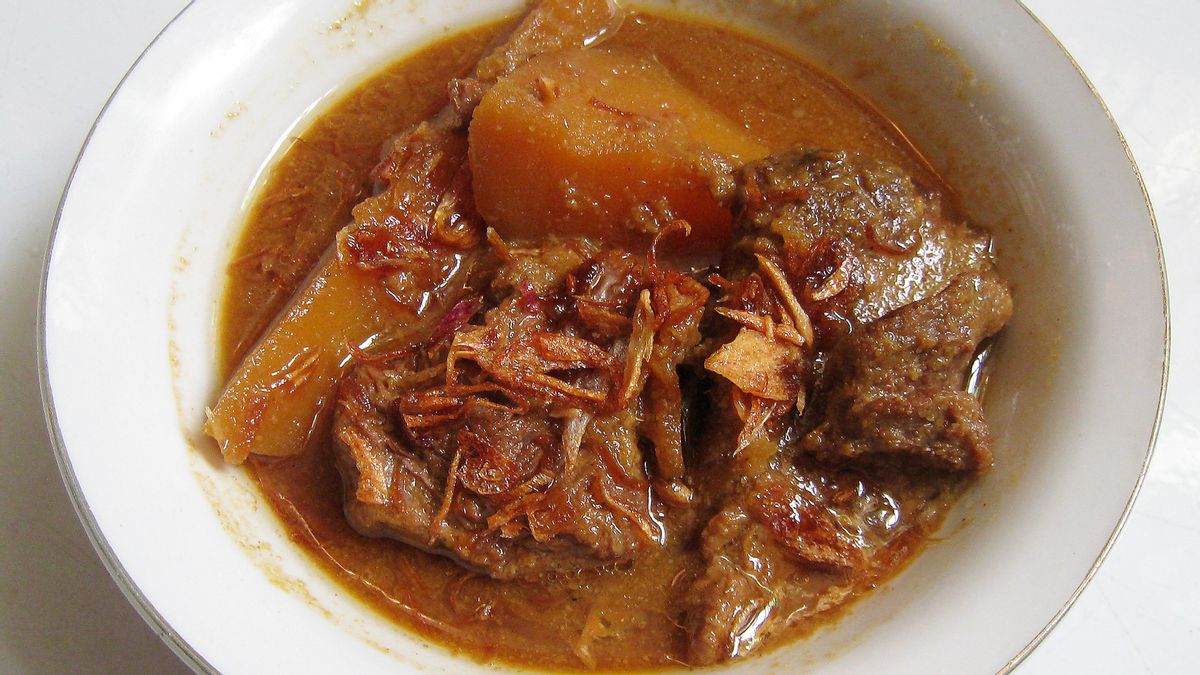JAKARTA - A variety of special foods, both light and heavy, are served during Eid. The food is heavy, namely chicken opor, chili fried liver, rendang and stews. But for the Betawi people, the most mandatory menu for Eid is stews. That day cannot be called Eid if there are no stews. Then how did the history of sweet-tasting dishes with distinctive spices appear?
The young Betawi figure, Masykur Isnan, explained that stew dishes or for the Betawi people are also called andilan, are served specially during Eid as a form of gratitude and a sign of victory after a month full of fasting.
"One of the things that made it different from the other days," said Masykur, who was contacted by VOI.
Masykur said that the stew (either meat or tofu) was a special dish typical of Eid because in the past this food was rarely found on the dining table of every Betawi community's house. "Especially the buffalo stew which is somewhat special," he said.
There is a reason why buffalo stews are considered more special for the Betawi people. According to Masykur, in the past, Betawi residents, apart from being fishermen, were generally farmers, so they were closely related to farming in rice fields or gardens where buffalo were used as a tool.
"Therefore, the easiest meat commodity to find is buffalo," he explained.
History of stewsHistorian JJ Rizal explained that the stew preparation was influenced by the combination of European, Middle Eastern Indian, Chinese and Indonesian cultures. The name semur itself comes from the Netherlands. "From the word stomerijj," said Rizal as quoted by Tempo, 2011 ago.
Stomerijj or steamer which means steamer is one of the cooking utensils. In the colonial era, the majority of Dutch people had Indonesian workers. "They shouted cooking in stomerijj, but they heard smoor and then became stews," he said.
However, according to Rizal, how to cook original stews from Indonesia. The archipelago has known the tradition of processing meat and fish since the hunting period in the 9th century AD.
This is evidenced explicitly in the reliefs at Borobudur and Prambanan temples. Then enter the tradition of the immigrants of India and the Middle East through the spices. Meanwhile, the taste of soy sauce in stews is influenced by peranakan Chinese elements.
Even so, the soy sauce used is authentic Indonesian sweet soy sauce. Meanwhile, the Chinese only know soy sauce. So the sweet black color and the warm taste of the spices show that this dish is authentic Indonesia.
According to Rizal, each region has a different story about stews. Betawi-style stews known as andilan have their own history. Andilan is usually cooked before Eid.
The unique thing is that the residents who want to cook the share jointly work with their neighbors or relatives. The goal is apart from being a form of gratitude as well as a symbol of achieving togetherness.
The English, Chinese, Japanese, Arabic, and French versions are automatically generated by the AI. So there may still be inaccuracies in translating, please always see Indonesian as our main language. (system supported by DigitalSiber.id)










